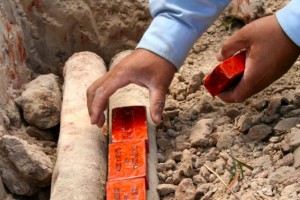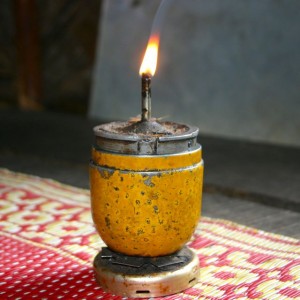Project Sekong 2014: When humanitarian clearance is lacking, villagers sometimes put themselves at risk.

Most of the UXO that we find cannot be moved and must be destroyed in place. When TNT is on-hand we destroy items the same day it is found. But, new government policies sometimes force us to wait for a delivery.
While we await the arrival of the explosives we need to complete our demolitions we are reburying the items we have already found, and are refraining from marking their locations. Thanks to modern GPS we’ll have no problem relocating those items; by not distinguishing the burial sites with warning signs we’ll avoid notifying scrap collectors that bomblets and other tempting ordnance is in the area.

Many parts of Laos have had no help with clearance since the war ended. Self-appointed village bomb experts have filled the gap and often recycle ordnance. Having a lamp made from an old cluster bomblet can create the dangerous illusion that bomblets can be collected and made into useful household objects.
The yellow, aluminum finned bomblet we designate the “3-B” and the Lao nickname “the pineapple” can be made into an oil lamp if a self-appointed village bomb expert removes the aluminum cap that holds the bomblet’s detonator, and empties the casing of the 80 grams of high explosive it contains.
